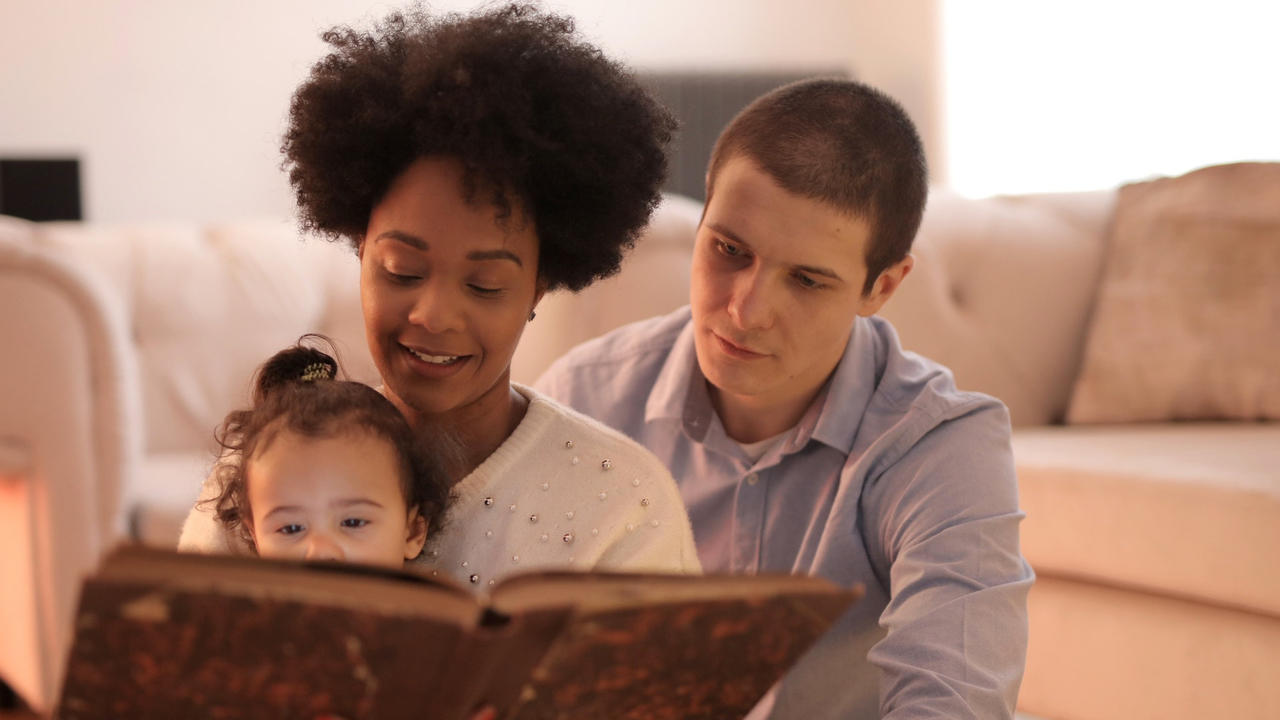Reading Readiness that Works

We can only think with the words that we know. We learn through using the words we have meaning for to form ideas in our self-talk. Successful reading and writing depends on sophisticated internal talk and visualization. Infants and young children who are not engaged in dialogue that builds conceptual understanding and vocabulary are unable to read until this deficit is overcome. They may be able to figure out the words but if they can’t use them to make sense, they aren’t reading.
There may well be a critical time in the innocence of childhood when the subconscious becomes aware of the magic of reading to access worlds of experience. This may explain why children who have been read to from the beginning often learn to read without any formal instruction. Someone else has ‘made sense’ for them until they could do it for themselves.
The best preparation for reading is to develop imaginative self-talk. The whole personality is involved in reading. Heavy emphasis on phonics and memorization impedes the ability of the brain to bring subtle understanding and experience to understanding text.
The best thing pre-schools and early educators can do to prepare children for reading is to build huge experiences around as many topics as possible through music, art, drama and storytelling. It is the adult’s role to discuss interesting stories and facts from all facets of history and life with young children.
So don’t just read storybooks written for children. Read and discuss books
about significant events, unusual creatures, other cultures, and so on,
from adult books. This is the best way to build the background needed
for reading; to create a rich store of words to use in making sense.
Writing is not talk written down. There are many words that only appear in written form, rarely in everyday conversation. The only way children can hear the words they need to know to read with understanding is by being read to, with discussion, using reading material that contains lots of expressive words and ideas.
n her work, Nancy Cohen, program coordinator of Children’s Care Connection at the Children’s Hospital in San Diego, sees children being tutored beginning at two years of age, and with homework. She says, “It is more constructive to get help learning within the context of enjoyable activities than a formal setting with flashcards and work sheets. This trend of tutoring the nation’s tiniest tots is about
competition to create the smartest kids in the shortest time. It is very stressful for children.”
My goal, as a grade one teacher, in the high needs schools I taught in, was to make my students’ time at school the best time of their day and to have them say at year’s end, whether they could read well or not, “I’m a reader. I’m a valuable person. I’m going to be ok.” That’s how we all learned to walk and talk, with confidence that we would succeed and each on our own time schedule. Allowing children to blossom in their own time is necessary for reading success too.
By VERA GOODMAN, B.Ed., M.A.

